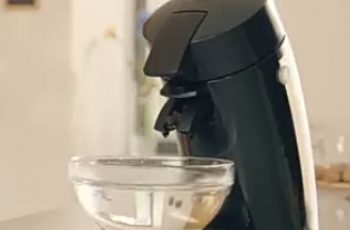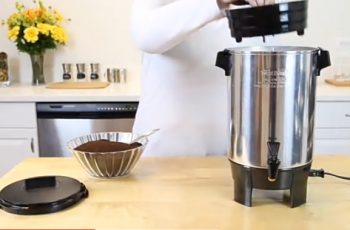Before making your coffee maker purchase, you thoroughly researched various models. During this process, you encountered reviews from disappointed customers who experienced issues with their machines emitting a plastic smell or taste. On the flip side, an equal number of consumers were satisfied, reporting no such issues. You took the gamble, hoping the negative feedback was atypical, yet it appears your gamble didn’t pay off. Now, you’re left wondering what steps to take next. Fortunately, we’ve formulated an effective method for cleaning your coffee maker, specifically designed to remove any plastic residue.
Why Your Coffee Tastes Like Plastic
Under no circumstances is plastic edible or harmless to neglect. In addition, two types of chemicals are used to toughen the base plastic material. It is primarily Bisphenol-A (BPA) or Phthalates that are responsible for the plastic taste you’ve experienced in your coffee.
Recent advances in technology have led some coffee makers to stop using plastics with BPA or Phthalates. Furthermore, the water reservoir of the coffee maker labelled as recycling grade 7 contains BPA. A significant component in the production of PVC is Phthalates, which are used in coffee maker materials.
Let us get back to the plastic taste in coffee makers again. This is the result of hot temperatures causing BPA and Phthalates to disintegrate from their parent plastic materials and dissolve in the liquid. The main reason why your coffee from most coffee makers tastes like plastic is due to this.
Preventive Methods To Use
By getting a coffee maker that’s BPA-free, you can avoid adding plastic to your coffee. The coffee makers should not even have PVC parts in proximity to high-temperature regions.
Only then will your coffee no longer taste like plastic. If you do not do this, you will still taste plastic a few months after brewing the coffee. Hence, if you want to buy a coffee maker which does not produce coffee that tastes like plastic, choose BPA-free materials.
Steps to Remove the Taste of Plastic From Your Coffee Maker
Here, we discuss how to clean a coffee maker that consistently produces bad-tasting coffee. You’ll find it quite easy to follow this process if you have been cleaning your coffee maker before. This process is slightly different from how you normally clean your coffee maker.
Step 1. Completely Empty the Coffee Maker
Make sure that all the coffee maker’s accumulated waste is emptied. Coffee from the basket, water from the reservoir and channels, and water from the brewer channel.
Step 2. Fill Up The Water Reservoir
The reservoir should be filled in equal proportions each time with vinegar and water. Make sure the solution is kept at a high level for maximum cleaning. As a rule of thumb, you can keep the level of solution at the reservoir until the third quarter without changing the proportions of water and vinegar.
Step 3. Start the Cleaning Cycle
There may be a cleaning or flushing button on some coffee makers. Push this to start the cleaning process. Under the output pipe, place a bucket to collect the wastewater and dispose of it in the sink. You can initiate the cleaning cycle by pressing any of the brewing buttons if your appliance does not have a specific cleaning mode.
Step 4. Repeat The Cleaning Cycle Once More Using Just Water
Repeat the process of filling the reservoir with water and thoroughly rinsing the coffee maker. In the end, your coffee maker won’t have a plastic taste blending into the brew anymore. Continue these four steps until the plastic taste is completely gone.
Guaranteed Way To Permanently Eliminate Plastic Taste!
As opposed to going into the DIY methods of eliminating plastic taste, here is a tip for those who are lazy, enjoy shopping, or have some cash to burn: buy a new coffee maker. Do not simply buy any coffee maker. Consider a coffee maker with a glass or stainless steel water reservoir and you will be done with plastic flavour coffee.
The plastic reservoir in coffee makers is responsible for bringing out the plastic taste. Cheaper coffee makers may experience outgassing when using plastic water reservoirs, but not those using stainless steel reservoirs. People who have higher-end coffee makers with stainless steel reservoirs don’t seem to complain about the plastic taste. It’s not something they deal with.
Conclusion
Hopefully, you have found your answer to how to get rid of the plastic taste in a coffee maker after applying some of the methods listed above. If you have to repeat this procedure more than five times you should consider buying a BPA-free coffee maker which will benefit from keeping your body free from toxic chemicals.


